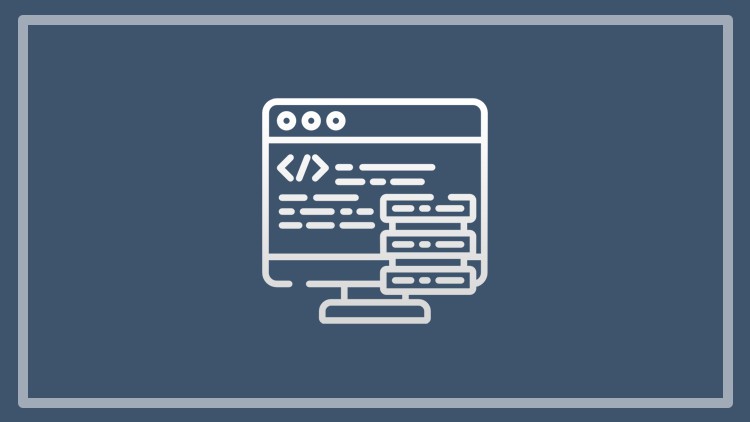ASP.NET MVC | Build a Complete eCommerce App
- Description
- Curriculum
- FAQ
- Reviews
ASP.NET MVC is a design pattern used to archive the separations of concerns. With MVC(model-view-controller) you can easily decouple user-interface (view), data (model), and application logic (controller).
This course will teach you all you need to know to build personal or commercial applications using ASP.NET MVC (.NET 5) as your development framework. You will start with just an empty project in Visual Studio and build your app from the ground up.
As data storage, you will use an SQL database and Entity Framework will be used to interact with your data. You will also learn how to update database schema using Entity Framework migrations, how to add data to the database, get data from the database, update data in the database and also delete data from the database.
You will learn about creating services to work with your data, but also create generic services/repositories to help you implement commonly used tasks like creating, reading, updating, and deleting data from the database.
Other important features include dynamic content rendering with ViewComponenets, Paypal payments integration role-based UI rendering.
You will learn all these, step by step with hands-on practice. You will also have a lot of quizzes that will help to improve your knowledge of the ASP.NET MVC framework.
Some of the topics that this course covers are:
-
Introduction to ASP.NET MVC
-
Models vs ViewModels
-
Views vs PartialViews
-
SQL server configuration with Entity framework
-
Entity Framework migrations
-
Adding, Getting, Updating and Deleting data from an SQL database using Entity Framework
-
Working with relational and non-relational data
-
Dependency injection
-
Major dependency injection lifetimes
-
Static and generic services/repositories
-
Model binding and validation
-
Routing
-
Cookie-based authentication
-
Role-based authorization
-
Role-based UI rendering
-
Sorting, Filtering, and Paging
-
Dynamic rendering with ViewComponents
-
Online payments using Paypal SDK
and much more…
You can find the source code of this course on my Github account: @etrupja/complete-ecommerce-aspnet-mvc-application
-
8Application models overviewVideo lesson
-
9Adding your first modelVideo lesson
-
10Adding producer modelVideo lesson
-
11Adding cinema modelVideo lesson
-
12Adding movie modelVideo lesson
-
13Adding your DbContext fileVideo lesson
-
14Adding model relationshipsVideo lesson
-
15Configuring SQL ServerVideo lesson
-
16Adding your first migrationVideo lesson
Migrations are used to sync your model changes with your database schema. But, which library should you install? How is a migration created and applied in the database?
-
17Seeding the databaseVideo lesson
-
18Application models quizQuiz
-
19Application controllers overviewVideo lesson
-
20Adding the ActorsControllerVideo lesson
Adding the actors controller and getting all actors from the database
-
21Adding the ProducersControllerVideo lesson
-
22Adding the CinemasControllerVideo lesson
-
23Adding the MoviesControllerVideo lesson
-
24Application controllers testQuiz
-
31Adding IActorsService interfaceVideo lesson
So far in our ASP.NET MVC application, we have injected the AppDbContext file directly into the controller which is not a good practice. You are going to remove the data-related code from the controllers and use services instead. You are going to start with the ActorsService and the first step is to create the IActorsService interface. Interfaces will be used to inject in the controllers, so this way we are adding one more layer of abstraction into our app.
-
32Adding your first serviceVideo lesson
-
33Major dependency-injection lifetimes (Singleton vs Scoped vs Transient)Video lesson
ASP.NET MVC supports the dependency injection (DI) software design pattern, which is a technique for achieving Inversion of Control (IoC) between classes and their dependencies. There are multiple dependency injection methods that you can use, but on this part, you will learn about the three main ones: Singleton, Scoped, and Transient.
-
34Designing your first form | Create ActorVideo lesson
-
35Model Validation - Adding data to databaseVideo lesson
-
36Getting item by id (Actor Details)Video lesson
-
37Updating data in database (Edit Actor)Video lesson
-
38Deleting data from database (Delete Actor)Video lesson
-
39Adding NotFound ViewVideo lesson
-
40Adding EntityBaseRepository filesVideo lesson
In the ASP.NET MVC application you have completed the Actor's section by adding the Create, Read, Update and Delete (CRUD) functionalities. Now, you will need to create the same methods for the Cinemas, Producers, and even Movies. But, instead of repeating the same code over and over again, we are to create a generic base repository. Base or generic repositories are helpful for the main functionality of the app. You code less and you achieve the same goal. On this part, you will add all the necessary EntityBaseRepository files.
-
41GetAllAsync() & GetByIdAsync() base methodsVideo lesson
-
42AddAsync() method in base repositoryVideo lesson
-
43UpdateAsync() & DeleteAsync() methods in base repositoryVideo lesson
-
44ActorsService configuration with EntityBaseRepositoryVideo lesson

External Links May Contain Affiliate Links read more





